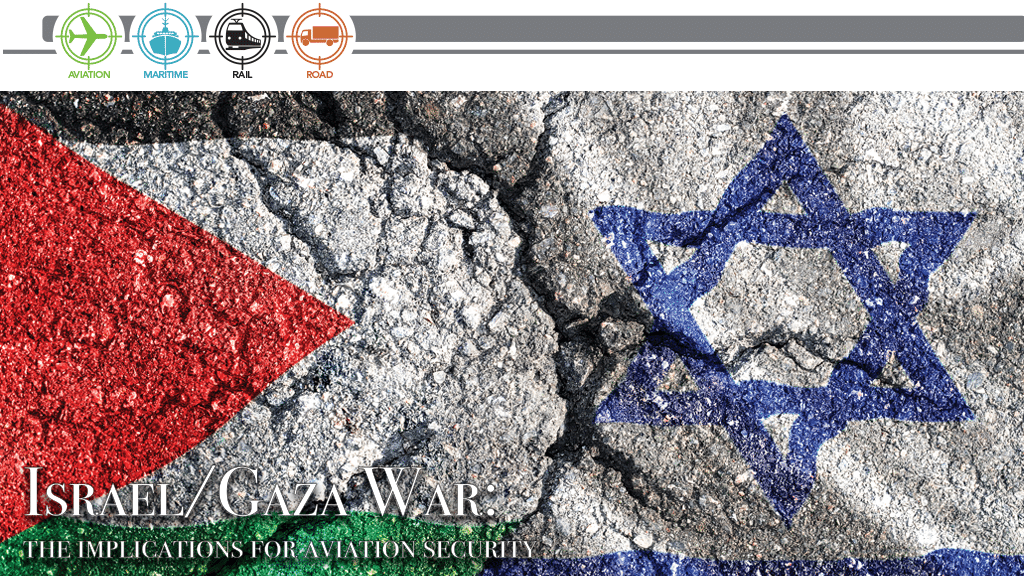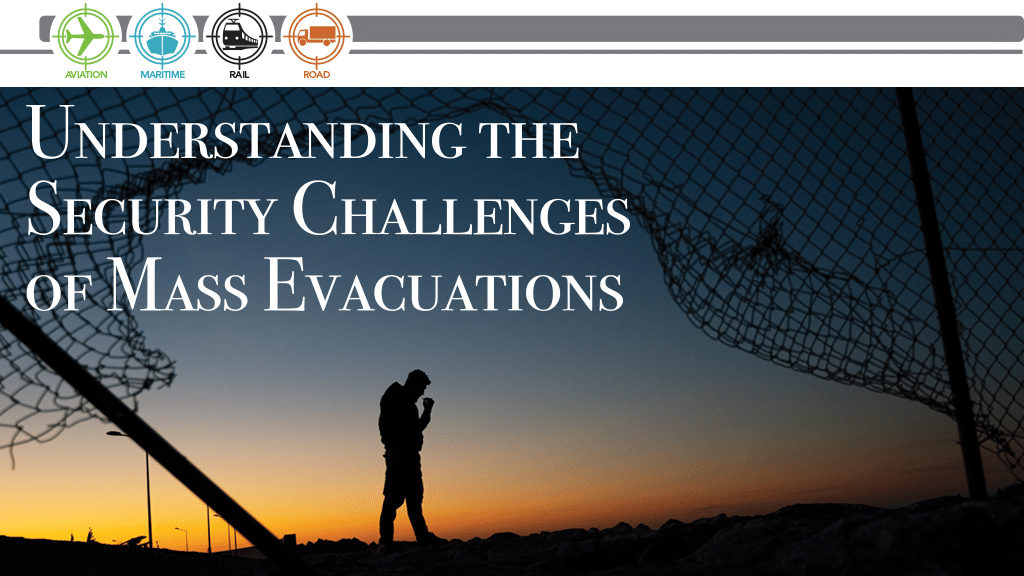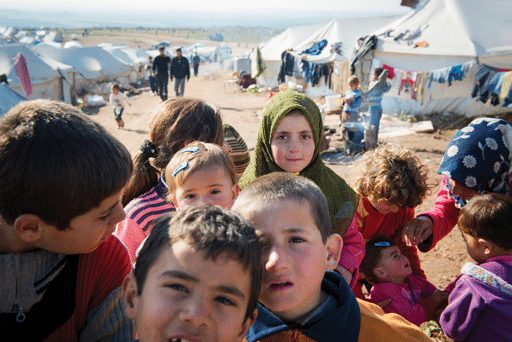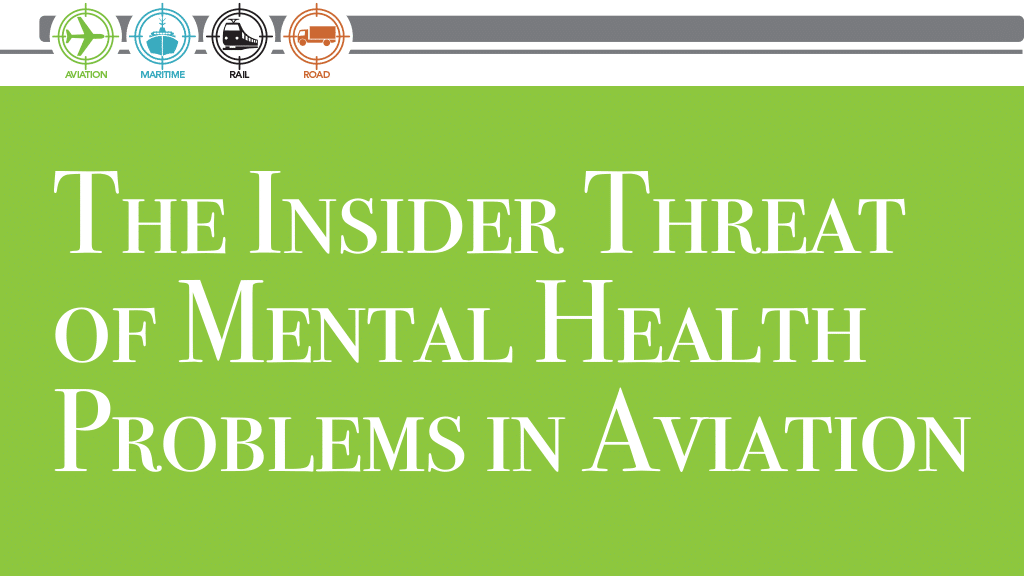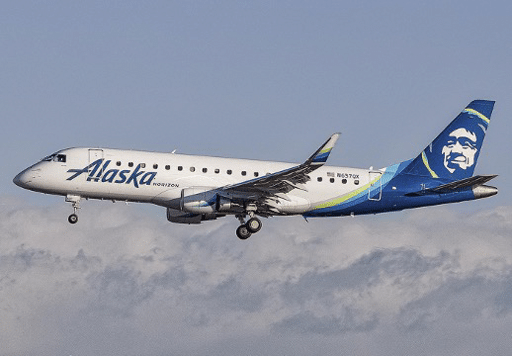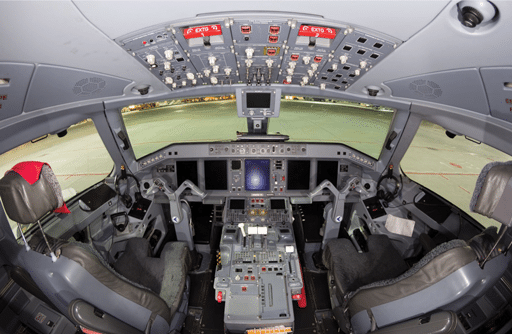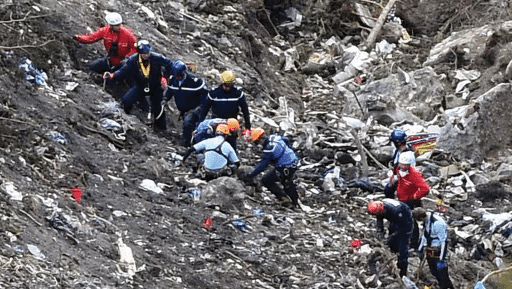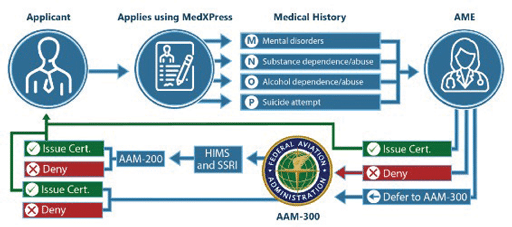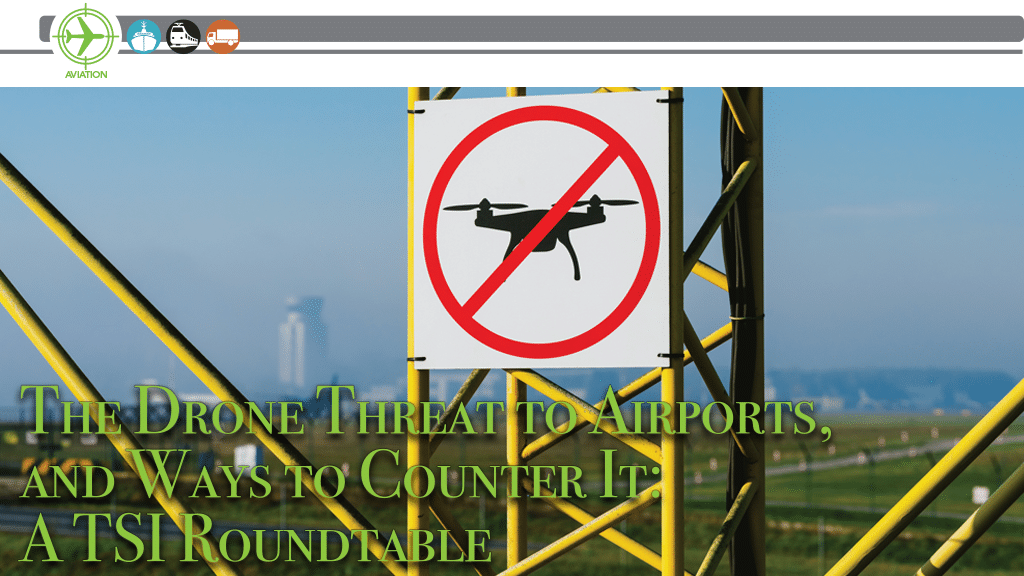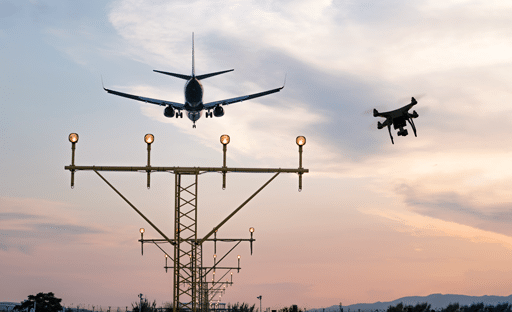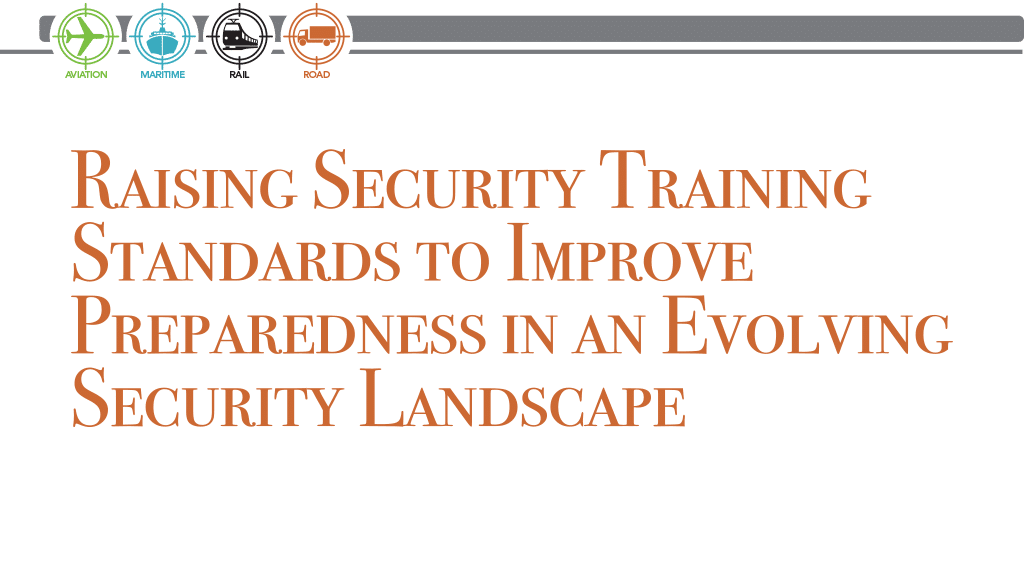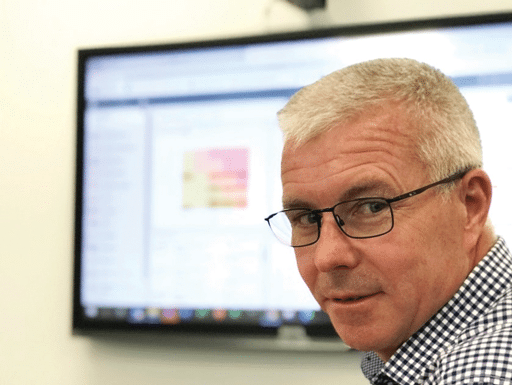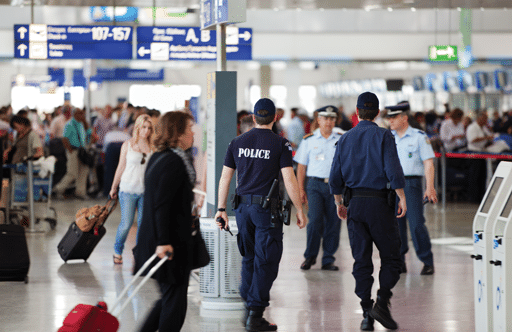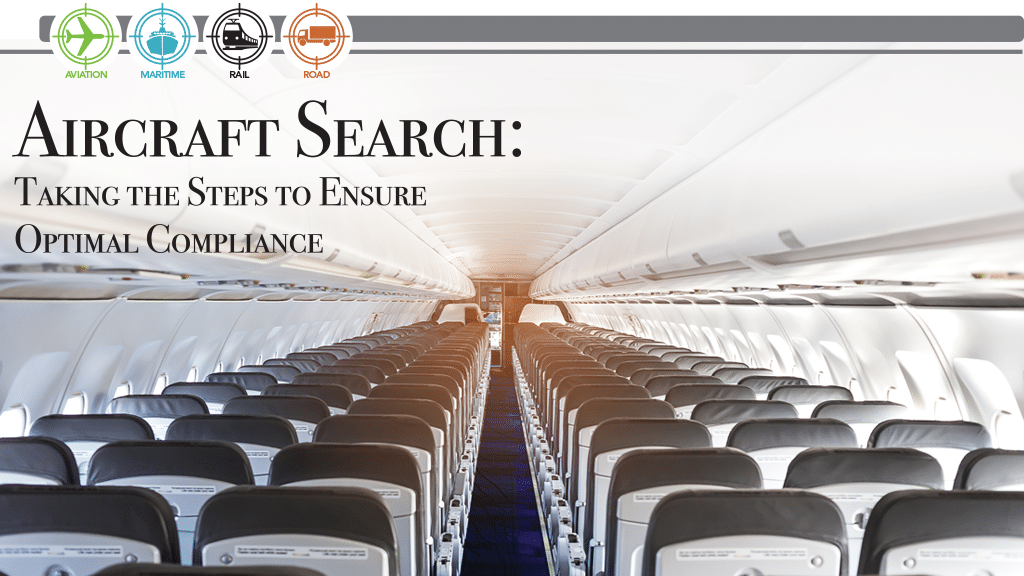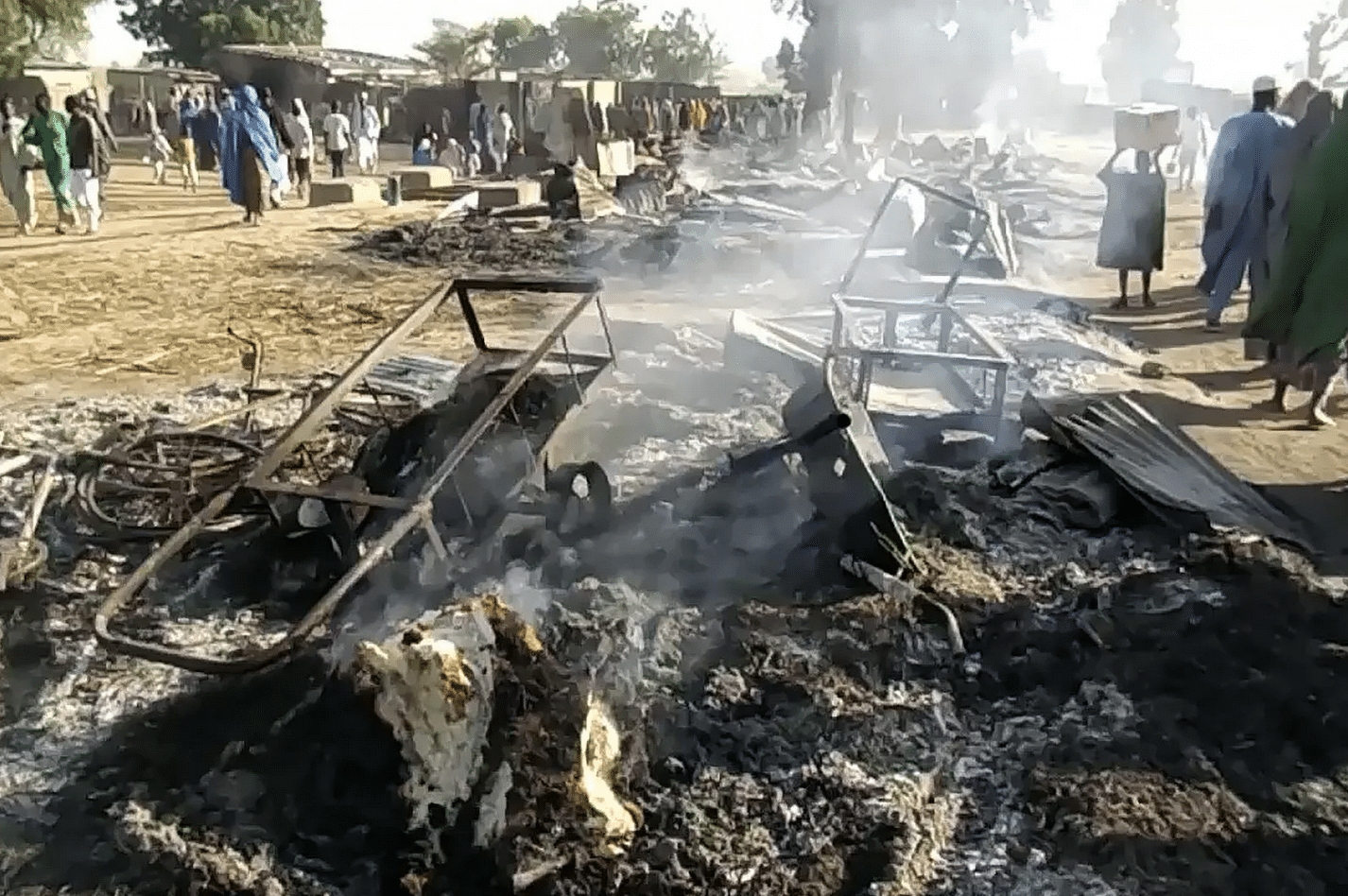Philip Baum considers the impact of the ongoing conflict in Israel and Gaza on the aviation industry and identifies potential challenges for those responsible for ensuring security at airports and in the skies.
More than two months have passed since the horrific terrorist attacks perpetrated by Hamas fighters against Israel on October 7, 2023, and, save for a week’s pause in hostilities, on a daily basis ever since, we have borne witness to the subsequent exacerbation of the humanitarian tragedy which has befallen the residents of the Gaza Strip as a result of Israel’s mission to free the 240 hostages seized that fateful day and, simultaneously, attempt to destroy Hamas completely.
It was an intentionally long opening sentence to this article, but it is one which has probably already riled some readers who struggle to brand Hamas a terrorist organization or, on the flip side, have little empathy for the Palestinians killed or forever scarred by the brutality of war. There may be even a few (precious few, I hope) conspiracy theorists out there, as there were post-9/11, who even question whether the October 7 attacks even happened.
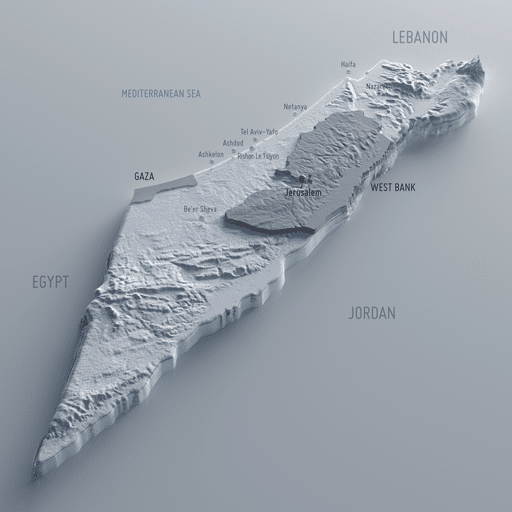
And therein lies one of the challenges facing the aviation community — amongst many other global industries — as we bring together people with divergent viewpoints on a highly emotive conflict. Like LinkedIn — pre-October attempting to remain a professional networking site yet now rife with hate speech on all sides — we have to consider what the Israel/Gaza (or Israel/Palestine) war means for the passengers we fly, the routes we operate, the staff we employ and the cargo we transport. This is a conflict that can, and already has, impact the good order and discipline on board aircraft … and worse.
The aviation industry, alike other transportation modes, faces a number of distinct challenges. At the disruptive, yet legal, incident end of the scale, we are witnessing airport-based protests — by both pro-Palestinian and pro-Israeli groups — who are concerned about the way in which the industry directly or indirectly facilitates the movement of weapons. Airports have, after all, increasingly become the stages for political expression regarding topics as diverse as the climate crisis, human trafficking, asylum-related issues, labor pay and governmental corruption. In the middle of the scale, we have aggressive behaviour taking place in our terminals or within aircraft cabins where those with different perspectives are clashing with each other and where we are witnessing blatant Islamophobia and antisemitism. Further along our continuum, there are specific acts of violence, as occurred in Dagestan (more later), where people and facilities are targeted by mobs; such actions have the potential to cause serious injury or even death. Finally, we cannot ignore the potential for the anger, senses of injustice, hopelessness and frustration experienced by many (I have to reiterate, on all sides) to lead to the very worst kind of acts of unlawful interference with civil aviation we traditionally exert our energies on preventing.
Addressing the topic, it’s nigh on impossible to avoid being political, so let me tackle the elephant in the room head-on — my own viewpoint. I’m not going to take you on a potted history of the conflict; you can find that elsewhere and, if we’re honest, most people will, as with the news channels they elect to view, read the history as related by those they empathize with the most. In an era of soundbite communication fueled by the anonymity afforded us by social media platforms, opinions are aplenty and the truth is hard to find. The reality is that we face a challenge of two peoples with legitimate concerns about their security and, indeed, very existence. Even if you don’t believe that one side’s claims are legitimate, the people on the ground are a reality. Israel does exist as an independent state and the Palestinians should, likewise, have a homeland. Bottom line, I still passionately believe in the two-state solution, even if that may incur the wrath of those towards the right of the Israeli, or even western, political spectrum, or the condemnation of those who cannot bring themselves to acknowledge Israel’s right to continued existence at all.
Responsibility and Rhetoric
All of us operating within the industry need to ensure that we are on the side of good order and discipline regardless as to our own viewpoints. It’s a challenge. The media certainly haven’t got it right and are blatantly causing upset to people on both sides with the imagery they show and the rhetoric they use. Sometimes we might not even appreciate the sense of injustice words or focus can cause. For example, those supporting the Israeli narrative condemn the BBC for failing to brand Hamas a terrorist organization — even though the British government regards it as such — and are frustrated that all coverage of the humanitarian disaster in Gaza on Al Jazeera is captioned “Gaza Genocide”; the words “terrorist” and “genocide” are politically charged, rarely devoid of bias and are clearly debatable. Both sides seize the opportunity to inject the word “Nazi” into their description of their opponents, exactly as is the case in the war between Russia and Ukraine. Those empathizing more with the Palestinian side express disgust with the extent of the media’s coverage of the trauma the Israeli families of the 240 hostages are going through, and consider their pain completely disproportionate to that endured by an entire displaced population wondering whether they will live to see the next day as the Israeli bombardment continues. We need to be sensitive to the perspectives of those we serve and we need to police the operation to ensure that our customers and service providers do likewise. The advantages are twofold — the prevention of conflict on board aircraft and the potential identification of insiders working amongst us who may be expressing sentiments which should be sounding the alarm bells.

For years, those of us who have taught aviation security have referred to the actions of the Palestinian groups of the 1960s to 1980s as terrorist attacks. I recall, when interviewing Leila Khaled in Jordan regarding her active participation in two hijackings (TWA, 1969, and El Al, 1970), that her only precondition for our meeting was that any report I wrote would not brand her a terrorist. I let people form their own opinion. Interestingly, that’s the BBC stance today regarding Hamas.
In order to avoid workplace conflict, we need to exercise caution in, and recognize the dangers of, convoluting words and terminology. Muslims are not the same as Arabs, Palestinians are not the same as Hamas, and Israelis are not the same as Jews. Any glance at social media, sadly including professional networks, will demonstrate that we’ve a long way to go. A failure to do so in this context directly feeds Islamophobia and antisemitism which is particularly worrisome for those operating in cosmopolitan environments.
I write as a Londoner. Whilst most British people are rightly upset by the images they see of Gaza on their TV screens, there are those who struggle with the de-Christianizing and de-whitening of their society and worry about the implications of mass immigration from predominantly Muslim nations. That latent racism amongst a small but significant minority was, I believe, one of the reasons why the nation, by the slenderest of majorities, voted for Brexit (exiting the European Union).
In the meantime, the U.K.’s Jewish community is also experiencing hate at unprecedented levels. The Community Security Trust (CST) reported on December 6 that in the 61 days since October 7 they had, “recorded at least 1890 antisemitic incidents across the U.K. This is the highest ever total reported to CST across a sixty-one-day period.” For comparison, “CST recorded 301 antisemitic incidents over the same 61 days in 2022. This means that we have seen an increase in anti-Jewish hate acts of 528% this year compared to the same period last year.” The U.S.A. is no different with the Anti-Defamation League announcing — also on 6 December 6 — that it had recorded a 337% increase in incidents over the same period in 2022. The relevance — our aircraft are a microcosm of society and increases of hate crimes on the ground, whoever they are directed at, can result in an increase in unruly incidents in the air.
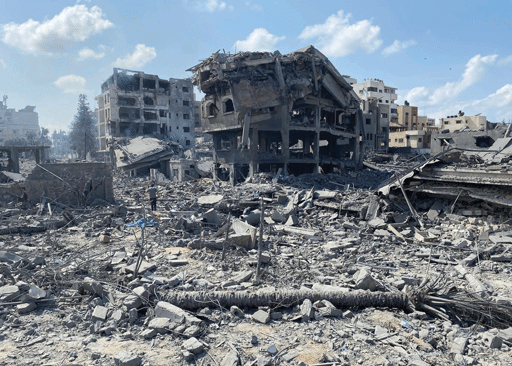
In terms of this conflict, there appears to be a readiness to tarnish all with the same brush. By no means do all Muslims support Hamas and nor do all Israelis support Israeli government action; just like not all Americans support either Trump or Biden and not all British people wanted to leave the European Union. Many are aghast at what their governments stand for. Our security briefings need to weed out any inherent generalizations we carelessly may include.
Failure of Leadership
Whilst the Israeli/Palestinian conflict is long-standing and October 7 was clearly not the beginning, the events of that day were a game-changer and there are many lessons to be learned. Let’s start with the fact that it was a security failure of unimaginable magnitude.
I hope that we will eventually learn the details of the intelligence purportedly shared with Israel prior to the attack and why it wasn’t treated with the degree of seriousness it warranted. Israel has long been regarded as having the gold standard of security both operationally and in respect of its processing of intelligence; this image was shattered. The scale of the snafu was one thing, but the simplicity of the attack should also serve as a lesson to us all.
We ensure the security of our airports through the deployment of checkpoints and fences; these offer little protection if they are attacked by large groups of armed individuals. And this was demonstrated at Makhachkala Airport in the Russian republic of Dagestan on October 29 this year.
Sickening scenes of hundreds of pro-Palestinian, antisemitic protestors storming the airport rapidly went viral on social media. Their target was a Red Wings aircraft arriving from Israel — or rather the passengers on board. This was no peaceful protest — the mob, carrying Palestinian flags and shouting “Allahu Akbar” broke through doors in the terminal and stormed onto the tarmac. One has to question whether any airport is staffed and equipped to repel such as action, yet every security manager should be re-examining their contingency plans for managing such an incident. Many will have already rehearsed scenarios to counter the threat posed by environmental groups, such as Extinction Rebellion, aiming to paralyze an airport’s ability to operate.
Protests
The right to peaceful protest may be one we are keen to preserve, although I have long been concerned that permitting such action at airports can distract the security services from their primary responsibility of ensuring that aircraft and their users are able to operate safely and securely.
Pro-Palestinian groups have already carried out a number of protests at European airports.
On November 14, Schiphol Airport in Amsterdam became the target of a group protesting the Dutch government’s role in supplying arms to Israel. They were chanting, “From the river to the sea, Palestine will be free,” which takes us back to the issue of rhetoric.
In our soundbite world, where issues — often laudable ones — become trendy, we must exercise even greater caution. I’ve already stated that I yearn for an indepe≠≠≠ndent Palestinian state, so I do believe in a “free Palestine”. But the Free Palestine movement’s catchphrase “From the river to the sea” does seemingly negate Israel’s right to exist and implies conquering the entire Holy Land. Is an airport really the right place for such aspirations to be uttered?
Meanwhile, in Dublin, activists occupied the European Commission offices in the city to both protest military arms being flown to Israel via Shannon Airport (in the west of Ireland) and against Ursula von der Leyen’s (president of the European Commission) solidarity visit to Israel.
It was a pro-Israeli group of demonstrators who decided to make their voices heard at Miami International Airport on December 3. They were protesting Qatar Airways being able to operate to the USA given the relationship between the Qatari government and Hamas.
Freedom of Dress
Expressions of political affiliation in the air have the potential to be more serious than those on the ground, where law enforcement is available to police an organized event and respond to excesses should they occur.
In the U.S., there were a number of inflight outbursts between Republicans and Democrats both in the aftermath of Donald Trump’s election as President and, in January 2021, pursuant to the Capitol Hill riots. Some of these were instigated by the clothes people wore – the “Make America Great Again” cap being a particular trigger for some, simple badges identifying voting allegiance for others. Likewise in the U.K. during the Brexit campaign.
On November 28 this year an American Airlines flight was operating a domestic route from New York JFK to Phoenix when a flight attendant noticed a passenger wearing a sweatshirt emblazoned with the word “Palestine.” The man was asked to remove the sweatshirt and wear it inside-out in order to minimize the potential for either offense to be caused to other passengers or, for some, paranoia to set in. There was no argument on board, rather an upset individual feeling silenced by the crew, albeit his humiliating experience has since been championed by the American-Arab Anti-Discrimination Committee.
These are very real challenges. After all, if wearing a Palestinian shirt or emblem is unacceptable, then presumably so should wearing an Israeli flag on one’s clothing? But if that is the case, there are a whole list of countries whose flags could anger others on board. Should Russians and Ukrainians be allowed to? And a Kurdish passenger may well be upset by somebody donning clothing with the Turkish flag. One could almost say that no flags or emblems should be tolerated as someone might be upset!

Coincidentally, I was travelling on a train in Bangkok a week ago when I was appalled to see probably the single most offensive T-shirt I have ever witnessed. I can’t write here the actual wording, but it used the most derogatory word in the English language to describe Jesus. I certainly hope that no aircrew would ever permit that shirt to be worn on an aircraft.
Other Conflicts
The plight of the Palestinian people should not be under-estimated, but it is strange how the eyes of the world are fixated on this conflict in particular. For sure, the imagery emanating from Gaza is agonizing to watch and we are simply not seeing anything like that scale of destruction anywhere else. But that doesn’t mean that death tolls elsewhere are not staggering to comprehend.
People are not taking to the streets of capital cities to campaign for the rights of other oppressed groups. I mentioned the Kurds earlier. Despite the thousands killed in their conflict with Turkey and ongoing air strikes (240 Kurdish locations reportedly hit by Turkey in 2022), the streets of European cities remain free from mass protest.
In March this year, the Syrian Network for Human Rights (SNHR) announced that it has documented, “the deaths of 230,224 Syrian civilians, including 15,272 who died due to torture, in addition to the arbitrary arrest/enforced disappearance of 154,817 others, while roughly 14 million citizens have been displaced.” Last year, the Middle East Monitor reported that the Syrian regime of Bashar al-Assad and its allies had been responsible for around 91% of deaths since the start of the conflict. Concern expressed by a few, but no flag waving.
There have been relatively few — and are currently a declining number of — pro-Ukrainian demonstrations condemning Russian military action. Nor for the Rohingyas of Myanmar. According to the United Nations, “860,000 Rohingya refugees are living in settlements across Bangladesh’s Cox’s Bazar district. Most of them, some 740,000, fled from Myanmar during the most recent displacement crisis in 2017. Other countries in the region host some 150,000 Rohingya refugees.” Darfur was topical for a while and, despite an August 2023 United Nations report accusing China of committing abuses that might be considered crimes against humanity against Uyghurs and other Turkic communities in the Xinjiang region, it remains just that — a report.
The Democratic Republic of Congo is host to one of the most significant ongoing catastrophes, yet it receives next to no airplay. The United Nations highlights that, “More than 6.2 million people are displaced within the country and more than one million Congolese have sought asylum, mostly within Africa. At the same time, the DRC hosts more than half a million refugees from neighboring countries.” And since this October, hostilities have increased and the plight of the population has worsened.
Yemen has, according to UN figures, 21.6 million people requiring some form of humanitarian assistance as a result of eight years of conflict in which the Houthis are trying to take control of the entire country. But the world observes in silence. The Houthis, being supporters of Hamas, launched a Qader missile strike on the Israeli port of Eilat on October 31 this year; it was destroyed by Israel’s Arrow missile-defense system. The incident is described by many as the first shoot-down of a ballistic missile outside of Earth’s atmosphere and is, therefore, the first recorded combat ever to take place in space. Most of the threat posed by the Houthis has been directed at maritime interests and, on December 12, they hit — but did not destroy — a Norwegian vessel they claimed was heading towards Israel.
The arguably excessive focus on Israel and Gaza is partially down to the access to social media, and presence of journalists (at great personal risk) in Gaza when compared to the other conflicts listed (except Ukraine). Ships at sea can be targeted but stories of executions, beheadings, and rapes at a music festival, and in the surrounding communities, or the plight of Palestinian women and children dying in their thousands have greater media appeal. But perhaps the West perceives the lack of peace between Israel and the Palestinians as a threat to their own societies … or, perhaps to be more accurate, illustrative of the potential threat to their own societies?
The examples listed, I should stress, are not designed to detract from the humanitarian disaster in Gaza, rather they are directed at a security industry audience who have to react to the unsung conflicts of the globe as well.
Profiling
I have been an ardent supporter and promoter of profiling, but completely reject racial profiling. There is little doubt that the xenophobia that exists within the security services of many states can extrapolate into discriminatory action. No community has experienced this more than those who follow the Muslim faith. For that reason, in training, I try, wherever possible, to use examples of attacks perpetrated by a broad range of adversaries; the attempt is to avoid stereotyping the threat.
Then again, no faith has been a greater victim of Islamist actions than Muslims themselves.
Muslim nations are equally concerned about the actions of groups such as Hamas and so are many religious councils. Indeed, in March this year the Islamic Fatwa Council issued a fatwa decreeing that “Hamas bears responsibility for its own reign of corruption and terror against Palestinian citizens within Gaza” and that it was prohibiting people “to pray for, join, support, finance, or fight on behalf of Hamas — an entity that adheres to the ideology of the Muslim Brotherhood movement”. And, in respect of the Muslim Brotherhood, they define their ideology as being, “The Islamist, violent, terroristic belief system and charter that advocates for the establishment of a global Islamist caliphate by all means necessary.” They even issued a charge sheet that many would have expected to be drafted by the Israeli government rather than an Islamic court.
Again, it all boils down to not tarnishing people with the same brush. The problem is not Islam per se, rather the extremist elements.
And they exist in Israel too. For the past year Israeli society has been divided by the election of a government that, as a result of coalition-building, includes some extremist characters that the majority of Israelis struggle to accept as being suitable to serve in Benjamin Netanyahu’s cabinet. The country has been tearing itself apart as large numbers of civilians have been protesting reforms to the judiciary.

Many believe that the internal divisions within Israeli society were one reason why the October 7 attacks were “successful” — the government had its eyes on internal challenges, including the protection of illegal settlements in the West Bank. These outposts are often “home” to religious vigilantes who believe that they have a biblical claim to the territory in which they reside. The more extremist members of this community are associated with the ‘Price-Tag’ movement whose guerilla attacks on local Arab villages deserve condemnation, yet the more extreme elements of Netanyahu’s government not only support them but openly encourage them to bear arms, officially in order to protect themselves.
Worst-Case Scenarios
From an aviation security perspective, the possibility of an aircraft hijacking perpetrated by suicidal terrorists, a marauding firearms attack at an airport, the bombing of an aircraft or the shooting down of an aircraft in flight cannot be ignored. Complacency is not an option, nor is a failure of imagination.
It’s easy to focus all our attention on conflict zones. Unsurprisingly, despite the success of the Iron Dome interception system, most overseas carriers suspended their operations to Israel within days of October 7; many have since resumed operations. According to the Israel Defense Force, by 5 December Hamas had fired 11,000 rockets towards Israel, 3,500 on the first day of the current period of hostilities.
On December 10, video footage emerged of an Arkia Airlines flight landing at Ben Gurion International Airport amid a barrage of missile attacks emanating from Gaza; some of the video was filmed by passengers on board. The airline has, throughout the conflict, continued to operate flights between Tel Aviv and Eilat.
Conclusion
Whatever your opinion is regarding the current conflict, and regardless as to whether you are advocating for a ceasefire, humanitarian pause or continued military action, the threat to aviation remains ever-present. The greatest threat is posed by Islamist groups, just as they have in the past, prepared to sacrifice the lives of the innocent and even themselves for their cause. Whilst we need to remain vigilant to all types of actions that can disrupt our operations, from unruly passengers through to suicidal terrorists, we now need to be extra alert to the insider threat. It is more than likely that there are some industry employees who, in light of the images they are witnessing and spurred on by the rhetoric and fake news of social media, could somehow justify actions that are incompatible with the goals of the aviation security industry — to ensure all passengers, all crews, all airports and all aircraft are safe from action that could have catastrophic results.
Philip Baum is visiting professor of aviation security at Coventry University, the managing director of Green Light Ltd., and the former editor of Aviation Security International. In 2021, he was presented with a Lifetime Achievement and Contribution to Aviation Security award by Emirates Group Security and Edith Cowan University. He is the chair of both Behavioral Analysis 2024 and DISPAX World 2024. He can be contacted at pbaum@avsec.com
